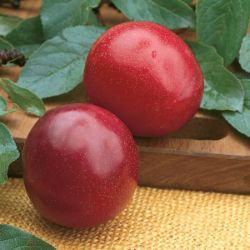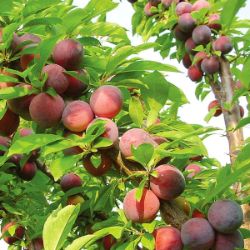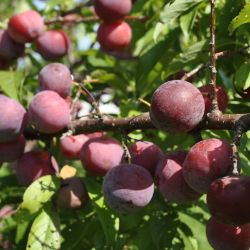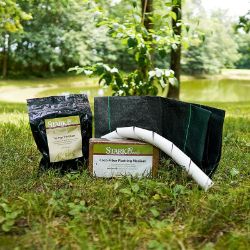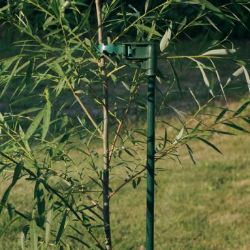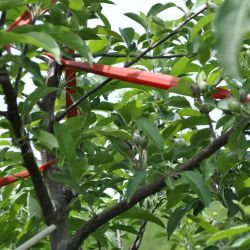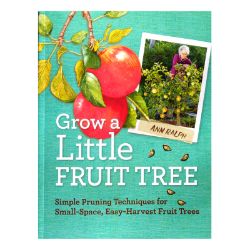Harvesting Plum Trees
Are you ready to enjoy delicious homegrown fruit? Harvest is the time to enjoy the results of your hard work. Keep a few things in consideration as you reap the fruits of your labor: the best time to pick the fruit from your tree, and how to store the fruit.
NOTE: This is part 11 in a series of 11 articles. For a complete background on how to grow plum trees, we recommend starting from the beginning.
Plum, pluot and plumcot trees will start bearing fruit in 3-6 years under normal growing conditions with proper maintenance and care.
When to Harvest
Make sure to wait until just the right time to pick your fruit. Plums are ready to be picked when they separate easily from the tree with a little twist. They should not be picked when firm.
Harvest European plums when dead ripe.
Japanese plums are picked when they begin to soften.
Harvest Seasons and Expected Yield
European Plums
Harvest season begins July thru September depending on the variety and location. Annual average yield per tree:
- Dwarf, ½-1 bushel
- Standard, 1-2 bushel
Japanese Plums
Harvest season begins mid-July thru early September depending on the variety and location. Annual average yield per tree:
- Dwarf, 3-4 bushels
- Semi-dwarf, 4-5 bushels
- Standard, 5-6 bushels
Plumcots
Harvest season begins June depending on the variety and location. Annual average yield per tree is 3-4 bushels.
Storage
Cool storage preserves them for winter enjoyment. Fresh fruit is a special treat during the bleak winter months. Fortunately, many varieties of fruit keep their fine eating qualities for a long time with proper storage. If you’re planning to store them, pick them a bit early, just as they start to ripen. Handle them carefully to avoid bruises that could develop into spoilage.
The ideal storage spot is humid and cool, from 32-40°F. Place them in perforated plastic freezer bags and keep them in any cool place. A refrigerator is the idea storage spot but any cool area in your house, the basement or an unheated porch might also be fine for a while. Bring them out to ripen at room temperature when you’re ready to use them.
It’s best to inspect stored fruit every week or so to check for any spoilage. That way, you can remove any that are developing soft spots or brown areas. This keeps spoilage from “spreading” to nearby fruit. Remember, “One bad apple spoils the whole barrel.”













